Anglers Booking Team
The expert copywriters at Anglers Booking have meticulously crafted this article. Our dedicated team of writers provides valuable insights and information to enhance your angling experience.
 11 minutes read
11 minutes readPier fishing is a fun way to enjoy fishing. It's also affordable and ideal for beginners for several reasons. It does not require a boat, and you don't need expensive equipment. All you need is basic knowledge and goodwill.
You can catch a variety of fish from the piers. They are often located in easily accessible places. This type of fishing offers a unique experience. It allows you to be in direct contact with nature. As you fish, you enjoy the sounds of the waves and the view of the water. It's a great way to spend quality time with friends or alone.
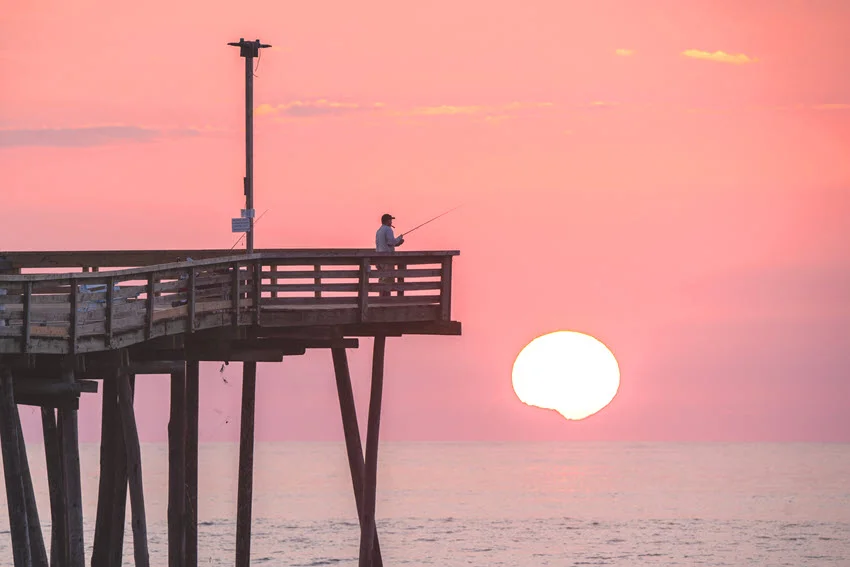
However, successful pier fishing requires proper preparation. This includes choosing the right equipment. Before fishing, you need to know what fish you can catch in that area. Choosing the right bait is a very important factor. Behavior and safety on piers are of critical importance.
This article will guide you through everything you need to know to start this adventure. You will find out which equipment and techniques are necessary and get tips to help you catch more fish. Well, our dear beginners, let's go on an adventure!
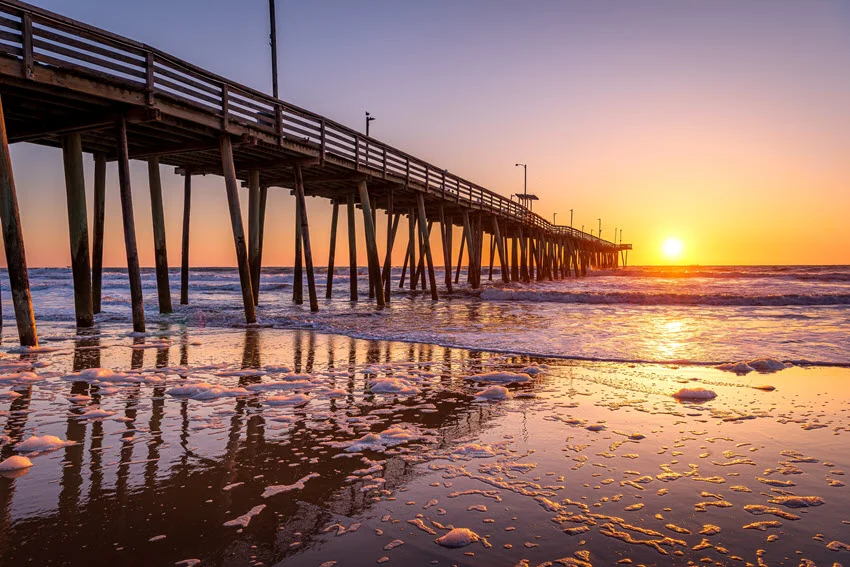
Choosing the right time to fish from the pier is crucial for success. Fish behave differently depending on the time of day. Tide seasons and weather conditions are also factors that influence fish behavior. That's why it's crucial to keep all of this in mind before fishing. Below, we describe in more detail how these factors affect the fish.
The best time to fish from the pier is early in the morning. Late afternoon is also a good time for this type of fishing. This is when the fish are most active. During these periods, the light is softer, and the water temperature is more pleasant, which attracts fish closer to the surface and shore. Night fishing from piers can also be successful.
Tidal water movement plays a key role in pier fishing. Fish are often most active during transition phases. Here, we mean the periods when the water starts to rise (inflow of tide) or decline (beginning of low tide). This is when the current carries food, encouraging the fish to be on the move. Before you go, check your local tide tables.
Different fish species have seasonal migrations, so it's important to know which fish are present during a specific year period. For example, fish are often closer to piers in spring and fall. In summer, they retreat to deeper waters due to higher temperatures.
Calm and stable weather conditions are best for pier fishing. Fish are usually more active before the weather changes. Clouds or a light breeze can be perfect for a successful catch. However, remember that windy days can make fishing difficult, especially if you plan to go fishing after a storm.
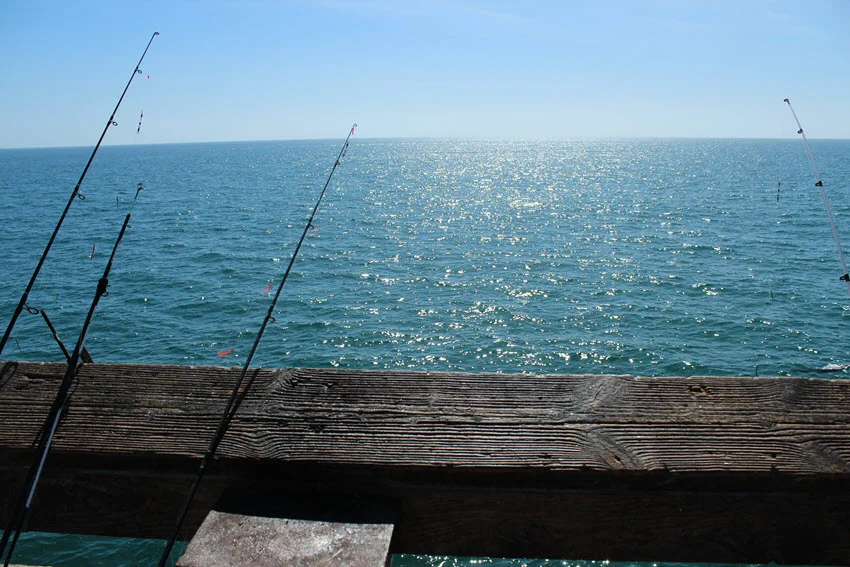
This question is fundamental. It is essential to understand where you can find fish from the pier. That's why you need to understand the habits of fish. Fish often congregate in certain spots near piers. It can be because of food, shelter, or electricity. Below, see some locations where fish most often congregate around piers.
Pier posts are favorite places for many species of fish. They offer shelter and plenty of food. Algae, clams, and other marine organisms that grow on the poles attract smaller fish. These smaller fish then attract predators. When fishing near the poles, watch out for bait snagging.
Fish often swim along the edges of the pier. The currents there are stronger and bring more food. This is a perfect place to cast your bait if you use techniques such as drift fishing or casting.
Shaded areas under the pier provide shelter from the sun and cool the water, which attracts many species of fish, especially during warmer days. Focus on these places during midday, when the sun is strongest.
Transition points where the sandy bottom changes to rocky are often fish habitats. Fish gather in these places in search of food. In addition, such places also shelter them.
If you spot a stronger current or eddies around the jetties, these are great places to fish. Fish often use currents to help them find food that the water brings.
To increase your chances of success, monitor the activity of the birds above the water. They often signal the presence of smaller fish. This means that predators are also nearby.
Also, remember to learn about the types of fish in the area where you are fishing and study their preferences before going fishing.
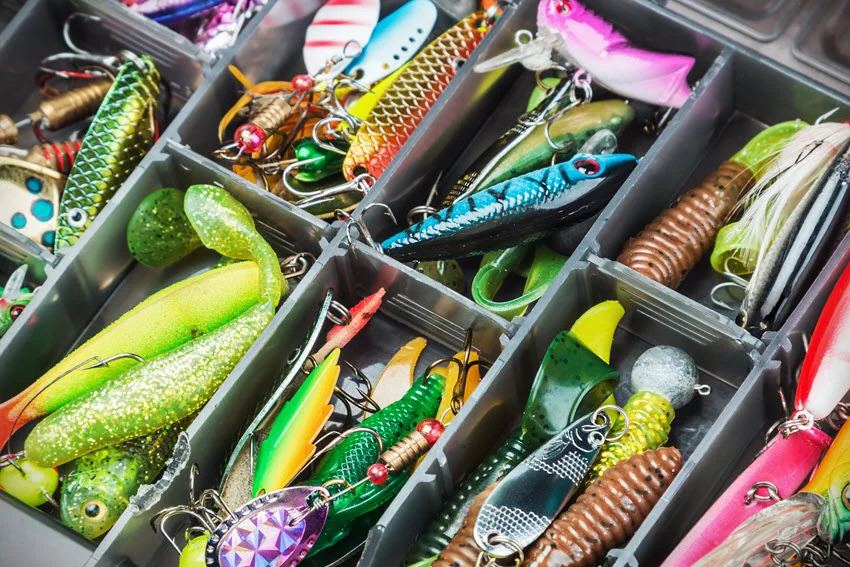
Choosing the right bait is key to successful pier fishing. Different types of fish respond to other kinds of bait, so it is crucial to adapt the choice of bait to local fish species and water conditions.
Natural baits are often the most effective and highly popular among anglers. Shrimp is an excellent choice for targeting species such as Sea Bass, Sea Bream, and Mackerel. These can be used either fresh or frozen.
Worms and sandworms are also great options for attracting most inshore fish, as they are readily available and very appealing to many species. For larger predators like sharks or Mackerel, using pieces of fish can be pretty effective. Additionally, clams and crustaceans are known to attract bottom-feeding fish.
Fishing with artificial baits is practical, as they are long-lasting and come in various shapes and sizes.
Spoons and wobblers are used for active predators. Their movement imitates a wounded fish. Silicone lures, available in various colors and sizes, are effective for fish near the bottom.
You can combine natural and artificial baits. Such combinations are often the most effective. For example, you can use artificial bait with the added smell of natural bait. That way, you will attract more fish.
Matching the bait to the type of fish is essential. Research what types of fish are in the area where you are fishing. Find out what baits they prefer. If you target a specific species, choose the bait that most closely resembles their natural food.
Consider the water conditions when choosing bait, whether for artificial or live bait fishing. Clarity, temperature, and depth can affect the effectiveness of a particular lure. Experiment with different options until you find what works best.
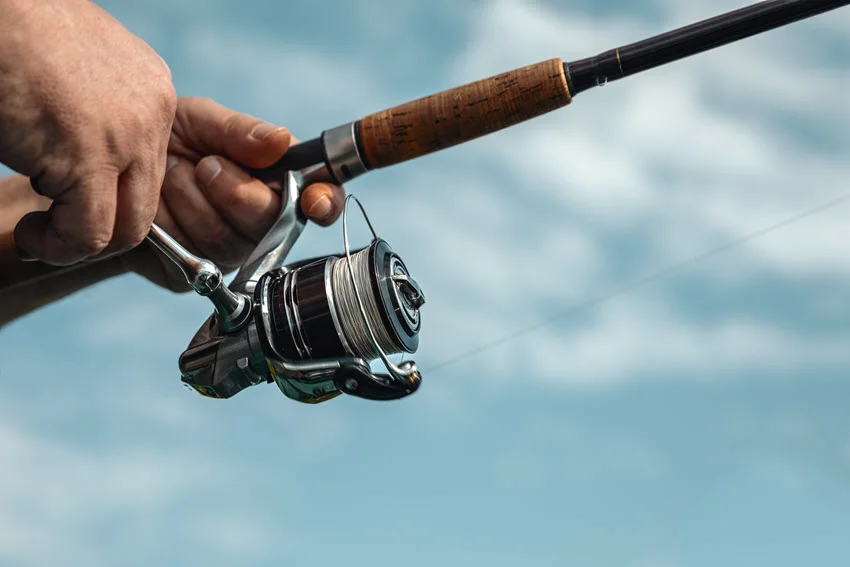
Making a good choice regarding the right equipment is essential for successful pier fishing. Pier fishing is specific in that it requires universal equipment. This equipment can be adapted to different types of fish.
It can be adapted to different water depths. Proper selection makes handling the tackle easier during long fishing hours. Below are some key recommendations:
Medium to Heavy-Weight Rods: These rods are perfect for targeting larger fish. A rod between 8 and 12 feet offers a good balance of control and casting range for deep water. A shorter and lighter rod would be more suitable for smaller fish.
Fishing Reels: A reliable reel adapted to saltwater conditions is essential to resist corrosion. Spinning reels are ideal for beginners, offering ease of use and versatility across different fishing techniques.
Reel Capacity: The reel should be able to handle medium-thickness fishing lines to ensure smooth operation during your fishing sessions.
Successful Fishing Tips: Selecting the right rods and reels is critical for maximizing your chances of success while pier fishing.
If you follow these tips, the chances of success in fishing are high! Choosing the right rods and fishing reels is very important!

Be sure to bring additional equipment in addition to the basic one. Having additional equipment ensures that you will be prepared for different situations.
Hook Removal Pliers: You need a net or hook to retrieve the catch.
Spare Hooks and Leads: You never know when and how many spare hooks and leads you need, so always have spares.
Tackle Box: A tackle box is essential to organize everything you've brought. A good toolbox has compartments that allow quick access to your needed tools.
Headlamp: A headlamp is handy, especially when fishing at night. It leaves your hands free while illuminating the space, which is important when changing bait or tying hooks.
Fishing Chair: A fishing chair can be a great addition. It is crucial if you plan to spend hours on the pier. Look for a folding chair. They are easy to wear.
Polarized Glasses: They reduce the reflection on the water's surface, allowing you to see the fish better. This can be especially useful when fishing near pier posts.
Cooler: A cooler to store the catch is also essential. It is necessary during warmer days. It keeps your catch fresh while you continue to fish. In addition, it can also be used to store drinks and snacks, allowing you to stay hydrated.
First Aid Kit: Be sure to bring a first aid kit. Cuts, punctures, or scratches may occur, and a basic set can be invaluable in such situations.
Customize your choice of add-ons to suit your needs. This additional equipment is unnecessary, but it can significantly help. It will make your fishing day easier and positively affect your fishing success.
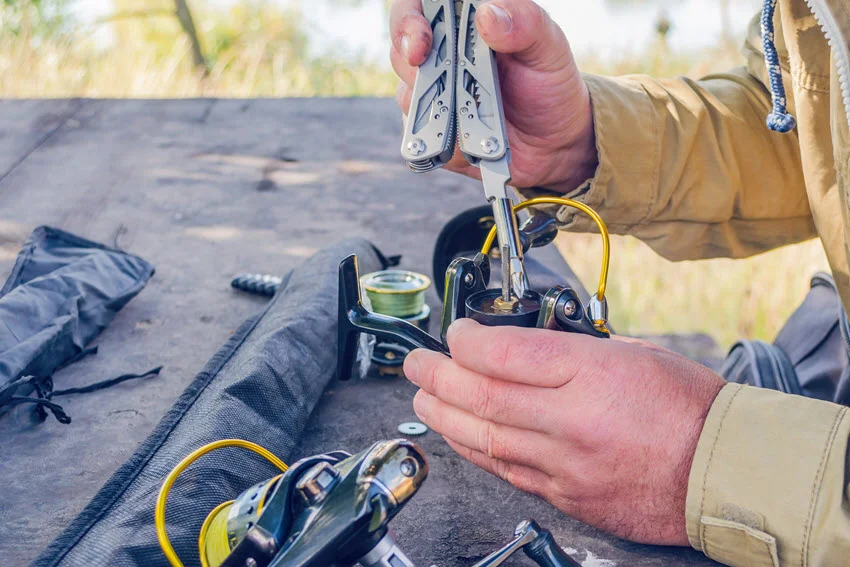
Equipment maintenance is the key to long-term efficiency and safety. Regular cleaning and servicing of rods and other tools can extend their life. After each fishing session, especially in sea conditions, washing the equipment thoroughly with fresh water is very important. This will remove salt and other impurities that can cause damage.
Also, check all pieces of equipment before every trip to the pier. Regularly greasing the rollers and replacing worn parts can improve your experience and reduce the risk of failure during fishing. Remember the cables and ropes, too, as these parts are crucial to the efficiency of your system. Maintaining your equipment improves your chances of catching.
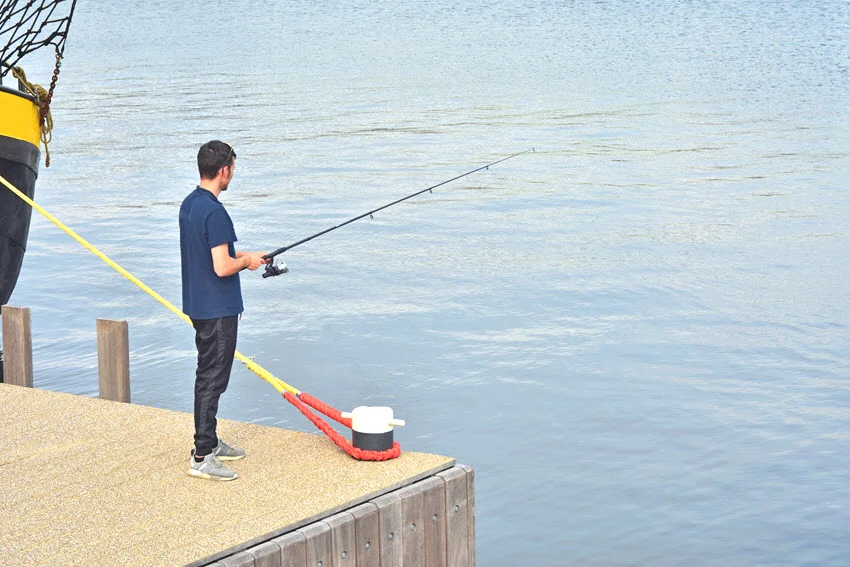
Pier fishing can provide many health benefits. It is suitable for both the body and the mind. Fishing as an activity can significantly reduce stress levels. Being in nature and focusing on fishing reduces anxiety and everyday stress. Studies have shown that people who spend time on the water have improved mental health.
Pier fishing can also have a positive effect on physical health. Walking to the pier, standing, and maneuvering equipment can improve fitness and coordination. At the same time, fishing is a form of moderate aerobic exercise that can contribute to the health of the cardiovascular system. Also, it helps burn calories. According to some research, fishing can burn between 200 and 400 calories per hour.
The mental benefits of fishing from the pier are significant. The activity requires concentration and patience, and it can help improve focus. In addition, being in nature enhances the quality of sleep, reduces the symptoms of depression, and helps restore mental energy.
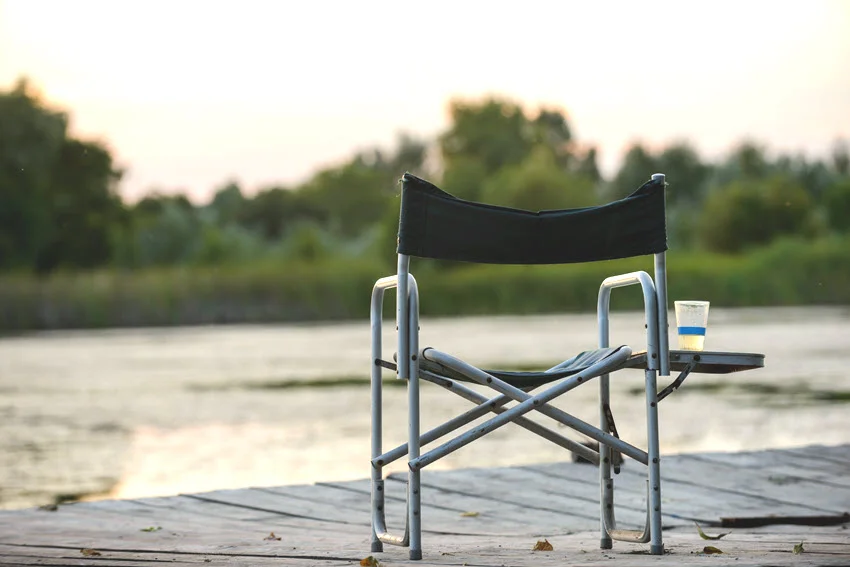
Fishing from the pier often takes hours. That's why preparing to be comfortable and enjoy the experience is important.
Proper Clothes: Wear layers that allow you to adjust to the temperature. Light clothing is, of course, a good choice for warm days. Extra layers are the way to go when it's windy or rainy.
Waterproof Shoes: Comfortable, waterproof shoes are a must. Good shoes are essential as the piers can be slippery.
Snack: Remember hydration and a snack. A bottle of water and a light meal will help you stay energized, especially if you plan to spend the whole day fishing.
Cooler for Drinks and Food: A cooler for drinks and food can also be helpful. Accessories like a fishing chair or a seat cushion can significantly improve comfort.
Essentials Bag: The essentials bag ensures that everything you need is within easy reach.
We're sure you want to make sure your fishing day is good. For this very reason, be careful when preparing.
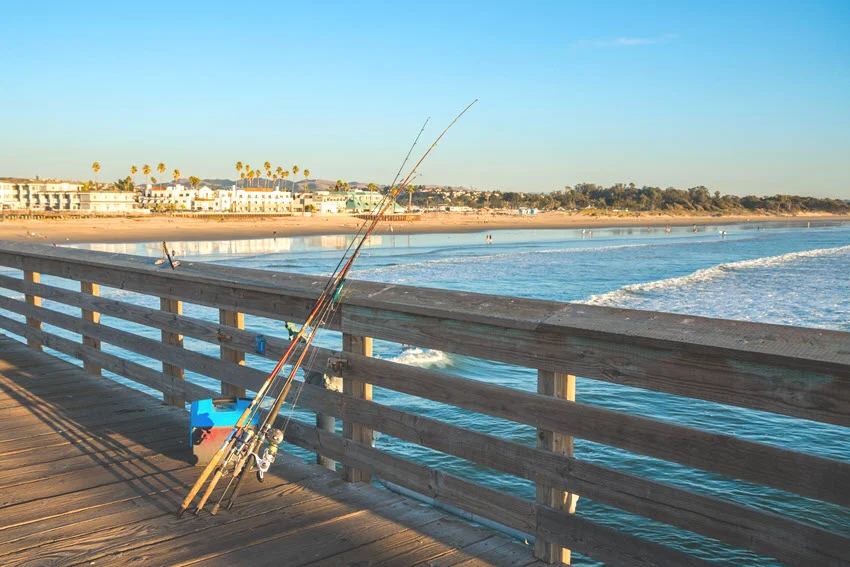
Pier fishing is generally straightforward. However, beginners often make mistakes that affect their success. One of the most common mistakes is improper preparation and come to the pier without essential equipment. That's why beginners must thoroughly familiarize themselves with the necessary equipment to ensure they have everything.
Another common mistake is throwing the bait in different places. Anglers often do not pay attention to shadows, poles, or transition points on the bottom. Fish naturally seek shelter and food in such places. Changing places can prevent you from waiting for fish in areas where the chances of catching are the lowest.
Also, improper handling of the catch is a common mistake. Returning the fish to the water without wetting your hands first can seriously injure the fish.
And finally, many ignore the rules and regulations. This can result in fines. By avoiding these mistakes, you will have a successful fishing experience.

When you fish from the pier, the catch is different. However, here is a true story that should motivate beginner anglers.
The famous story of the huge catch from the pier comes from Walter Maxwell. This angler set the world record for the largest tiger shark caught with a rod and line from the dock on June 14, 1964, off the Cherry Grove Pier in South Carolina. Maxwell then caught a tiger shark that weighed 1,780 pounds. This record lasted for 47 years.
Maxwell was an ordinary angler known for his love of challenge and big fishing from the pier. His incredible patience and the strength to deal with such a large catch showed the pier's potential.
Although the record was later broken, Maxwellow's catch remains among the most celebrated pier fishing stories. This feat reminds us that unforgettable moments can be created even in places not typical for big hunting. This catch remains an inspiration for many beginners.
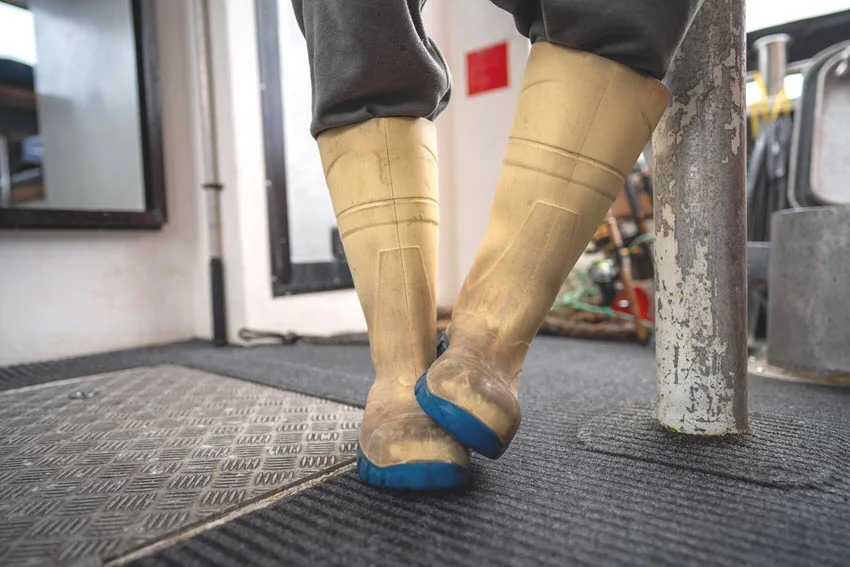
Fishing from the pier brings specific risks. That is why it is essential to pay attention to security.
Pay special attention to our tips below.
Appropriate Footwear: Many piers are slippery due to salt, water, and waves. Injuries are common if you don't wear shoes with good traction. Shoes with rubber soles are ideal for these conditions. They provide a secure step and prevent slipping.
Set up Your Equipment Correctly: It is also important to set up your equipment correctly. Fishermen often use long rods. Make sure your rod and reel are secured to a stable surface. If fishing in an area with big waves, you can use additional stabilization equipment with rod holders or stands.
Follow the Weather Forecast: Weather conditions at sea can change quickly. That's why following the forecast before you go to the pier is important. High waves and strong winds can make fishing from piers extremely dangerous, especially in the open part of the pier. Always be prepared to retreat to safety if you notice the weather taking a turn for the worse. Be sure to bring appropriate weather protection with you.
Safety Equipment: Another vital tip is to use safety equipment. Wearing a seat belt can be helpful if you are in an area with a risk of falling. Also, some anglers use ropes or chains to secure themselves in places with high edges. This type of added protection can prevent serious injury in the event of an accident.
Avoid Crowds: Along with all this, it is also important to avoid crowds. Many popular piers can be very crowded, creating additional risks of accidents. Be careful when passing other anglers, as carelessness can lead to collisions and falls. If the pier is crowded, try to find a place where you will be safe and always be considerate of others.
Sun Protection: Finally, sun protection must be addressed. Pier fishing often means spending a lot of time outdoors what can increase the risk of burns. That's why it's important to wear protection such as caps and creams with a high SPF factor.
Pier fishing can be safe and enjoyable. Follow these simple tips, and we believe you will have no problems. Be responsible and careful with yourself and others.
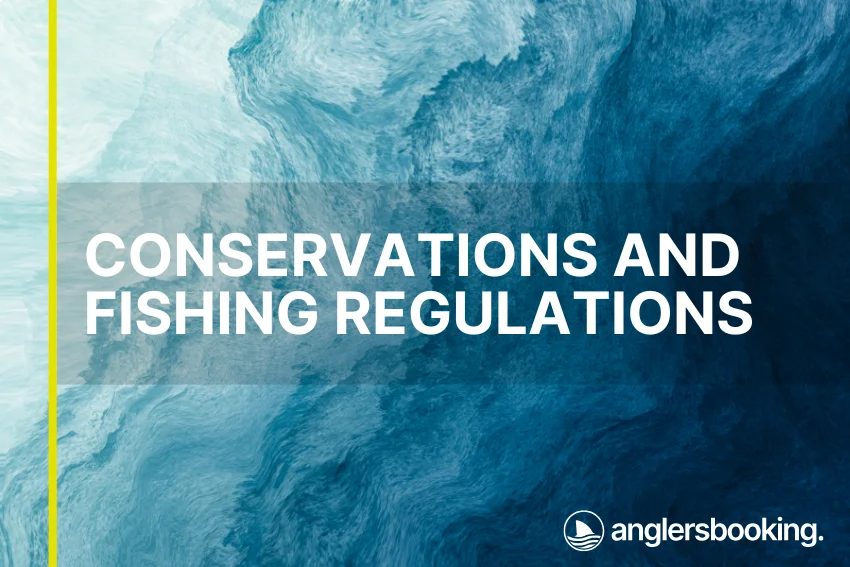
Understanding fishing regulations and preserving specific fish species contributes to protecting fish populations and ecosystems and promoting responsible angling practices.
Anglers Booking team
Many people think there are no rules and regulations when fishing from piers. That is, of course, not true. Before you start fishing from the pier, you must familiarize yourself with the rules that apply in the area. Adhering to these helps you avoid potential fines.
Many countries and regions require a fishing license even for pier fishing. Check if you need permission and how it is procured. In some areas, piers offer fishing without a license. For example, you must take an online course to fish at Skyway Fishing Pier, FL. However, it is essential to check beforehand.
There are regulations on the minimum size of fish you can keep. There are also rules on the maximum amount of catch per person.
Some types of fish are protected by law which means that you must immediately release them back into the water if you catch them. Find out about protected species in the area where you fish.
Pier fishing often involves sharing space with other anglers. It is essential to show respect, take up only a little space on the pier, and dispose of garbage properly.
Some areas have seasonal fishing restrictions to allow fish hatcheries to remain preserved. Each pier has its own unwritten rules. Pay attention to the signs and recommendations of local anglers. They can offer helpful advice.
Pier fishing offers a unique experience, and it is attractive for beginners. It's not just about the catch; the whole story is much more significant; it's about the entire experience. Enjoying the sun by the sea with other enthusiasts is priceless.
Each pier has its peculiarities to be discovered, making every trip exciting and full of potential. What is unique about fishing from the dock is the variability of the environment. Every visit to the pier brings something new. It could be the tides, the type of fish, or how your gear performs.
The best part is that you don't need expensive devices and complicated techniques. With a simple rod, you can enter the world of pier fishing. Don't wait! Start making precious memories! Pack your gear, find a pier, and let the fishing begin. Who knows what exciting catches await you!
What are your favorite pier fishing tactics? Do you have any advice? Share your experiences in the comments! Let's continue the conversation and learn from each other.

The expert copywriters at Anglers Booking have meticulously crafted this article. Our dedicated team of writers provides valuable insights and information to enhance your angling experience.
Embark on unforgettable fishing adventures with us at Anglers Booking.
book your charterOctober 17, 2025
October 15, 2025
October 10, 2025
October 11, 2025
October 4, 2025
September 29, 2025
September 25, 2025
September 21, 2025

You're now part of our exclusive community. Get ready for premium content and updates straight to your inbox.
close
Subscribe to our newsletter and receive a selection of cool articles every week.
Please enter a valid email address.

Be the first to know when we're back in action.
Please enter a valid email address.
Leave a Comment
Your email address will not be published. Required fields are marked *
Thank you for your comment! It has been submitted for review and will appear on the site shortly.